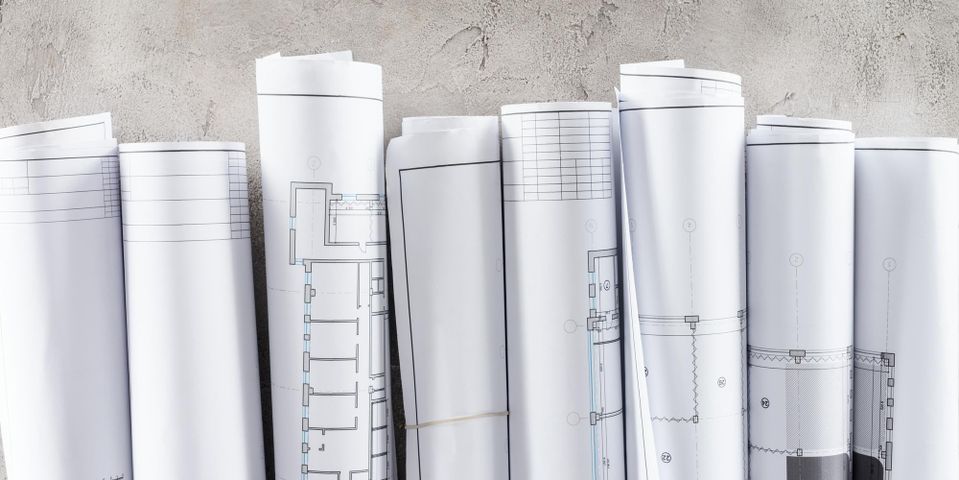
If you have a construction project on the horizon, you’ll need blueprints to guide you through the details of the build. From dimensions and materials to parts and placement, these two-dimensional maps contain all the necessary information on how to bring your vision to life. Read on to learn more about blueprints and how to read them.
Your Brief Guide to Blueprints
Get the Right Size
Though some may be the size of regular notebook paper, most blueprints work best on larger sheets. 24 by 36 inches is the standard, allowing you to roll them out and get a more hands-on feel for what your project requires. They’re available in black and white or full color, and the latter may make it easier to see all of the details and stay organized.
Know How to Read Them
 Blueprints include a cover page, time block, scale, legend, notes, and revisions. The title page is of particular significance since it contains the name of the design firm, copyright information, creation and revision dates, and scale. The revision block includes changes to the projects and the dates they were made. Under the notes section, you’ll find technical explanations from your engineer.
Blueprints include a cover page, time block, scale, legend, notes, and revisions. The title page is of particular significance since it contains the name of the design firm, copyright information, creation and revision dates, and scale. The revision block includes changes to the projects and the dates they were made. Under the notes section, you’ll find technical explanations from your engineer.
Consider a Digital Backup
Print copies of blueprints are crucial to the success of your project, but it doesn’t hurt to have digital versions as well. In addition to having backups on your computer, digital versions provide an easy way to update your plans with revisions, notes, and other information. You can also email them to contractors and other personnel with the click of a button.
When you need clear, legible blueprints for your next construction project, order them from Jones Printing Co Inc. Since 1885, this printing company has provided gorgeous posters, flyers, booklets, brochures, business cards, and other materials to the Sanford, NC, area. Visit them online to view samples of their work, and call (919) 774-9442 to get a quote on specialty printing services.
About the Business
Have a question? Ask the experts!
Send your question

